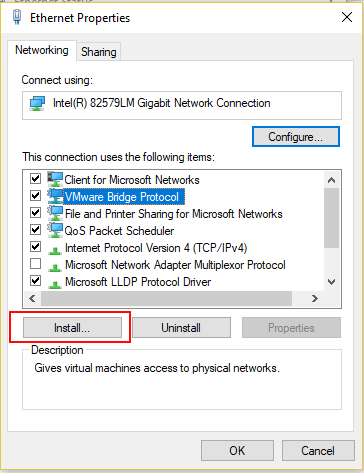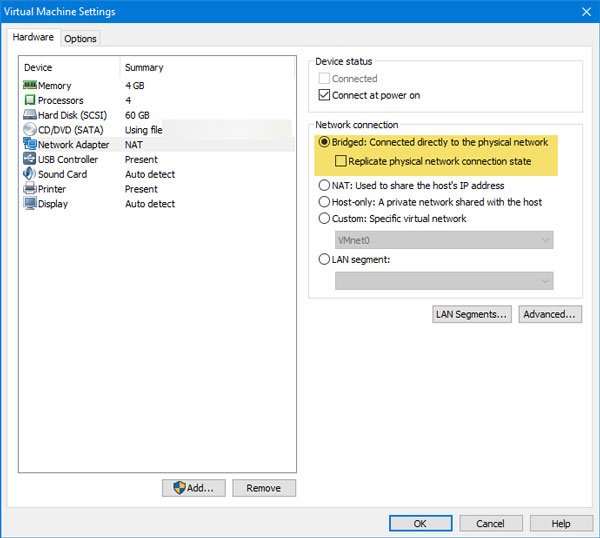

default comes with support of the providers such as Docker, VirtualBox and VMware. If the device goes down, network traffic is affected. The third virtual machine (192.168.1.3) is configured in bridged mode which basically means that the virtual network adapter in that virtual machine is bridged to the production network and that virtual machine operates as if it exists directly on the production network. default: Which interface should the network bridge to. The inline designation also alerts you the device is critical to network function. Routers, firewalls and switches are examples of inline devices. Repeat these steps for each virtual switch that is attached to a NIC used in an inline In network terminology, an inline device receives packets and forwards them to their intended destination.In the switch properties, switch to the Security tab.


If the host system is on a network, bridged networking is often the easiest way to give the virtual machine access to that network. Caution: Be careful when you change the bridged adapter mappings.

Choose an adapter from the drop-down list beside the name of the virtual switch you want to use. Click the Host Virtual Network Mapping tab. To designate a physical Ethernet adapter to bridge to custom virtual switches 1. Bridged networking connects a virtual machine to a network by using the network adapter on the host system. You can create a custom bridged network on virtual switches VMnet2 to VMnet7. Select the ESXi server, and switch to the Configuration tab. Bridged Networking - VMware Search Best Courses Courses.By unchecking VMware Bridge Protocol on Local Area Connection 2, I was able to resolve the problem.Allow Ports to Accept and Bridge Packets (Promiscuous Mode)Īny VMware virtual NIC used to deploy the virtual appliance in line must be configured to allow promiscuous mode, ensuring the LAN Local area network and WAN Wide Area Network ports are capable of accepting and bridging packets that are not destined for them. This led me to believe that the network is confused which adapter to use when bridging to the public network. Looking at the LAN properties, I've found that the two adapters have both VMware Bridge Protocol turned on. The bridging should be done on the public adapter. I have 2 network adapters, one for public network and the other for private network. So, looking at the Local Area Network Connection, the VMware Bridge Protocol is enabled on both Local Area Network Connections. VMnet0 never displays as a Virtual Network Adapter like NAT (VMnet8) or Host-only (VMnet1) Network Adapters because it's not a Network Adapter, it's a Protocol and will appear in the Host's Physical Network Adapter's Properties as VMware Bridge Protocol.ģ. I was expecting to see vmnet0 network connection, but it's not there. The Network Connections show vmnet1 and vmnet8, but not vmnet0. Bridged: Your VM will be in the same network as your host, if your host IP is 172.16.120.45 then your VM will be like 172.16.120.50. According to VMware administrative control panel, bridging is provided by vmnet0 as shown on GUI below.Ģ. After some research, I found the following:ġ.
#Bridged network vmware windows#
The Host server is running Windows 2003 SP2, 32-bit OS, and guests are all Centos 5. There were no changes to a vmware configuration, nor server setting as it was working just fine. After a reboot, the bridged network guest operating systems use suddenly stopped working. Today, the data center I've been using have had power failure, and the server went down for an hour. Ask Question Asked 10 years, 6 months ago. The server I've setup more than 2 years ago have been running flawlessly with more than a few reboots over the course of 2 years, and never had network problem in the Guest Operating system running Centos 5. Only Connect Vmware workstation bridge network: can only connect with the host. I've had a hell of time today trying to figure out vmware server 2 network bridging problem.


 0 kommentar(er)
0 kommentar(er)
